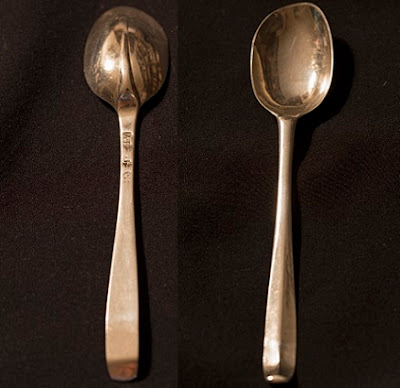The spoon was made in 1721, but the maker's mark is rubbed. A scratch weight of 2=11 is engraved on the spoon heel. I had assumed incorrectly that the arms were those of the Most Royal Noble of the Garter. Looking through the catalogue, in the section Antique Spoons and Forks, I saw entry number 551 for "Table Spoons. Three rat-tail, Old English pattern. Plate XXII, No. 5. A.D. 1721. Weight, 6.5 oz." Plate XXII, No. 5 depicts the same arms that appear above on my spoon. Given that the date and arms match, is it too much to conclude that my spoon is one of the trio listed in this catalogue?
It would appear that Henry had these spoons (and presumably other plate) made to take with him when he was appointed Governor of Jamaica. What I am not certain of is if Henry received a plate allocation from the Jewel House, or if he paid for the silver himself. The scratch weight leads me to believe it was government-issued, but the scratch weight could also have been applied during a later inventory.
Sources:
Calendar of State Papers Colonial, America and West Indies: Volume 33, 1722-1723. Ed. Cecil Headlam. London: His Majesty's Stationery Office, 1934. British History Online. Web. 13 April 2020.
Collins, Arthur. Peerage of England; Genealogical, Biographical, and Historical. Vol. II. F.C. and J. Rivington, 1812. Google Books. Web. 13 April 2020.
The English Encyclopaedia: Being a Collection of Treatises, and a Dictionary of Terms, Illustrative of the Arts and Sciences. Vol. V. G. Kearsley, 1802. Google Books. Web. 13 April 2020.




















